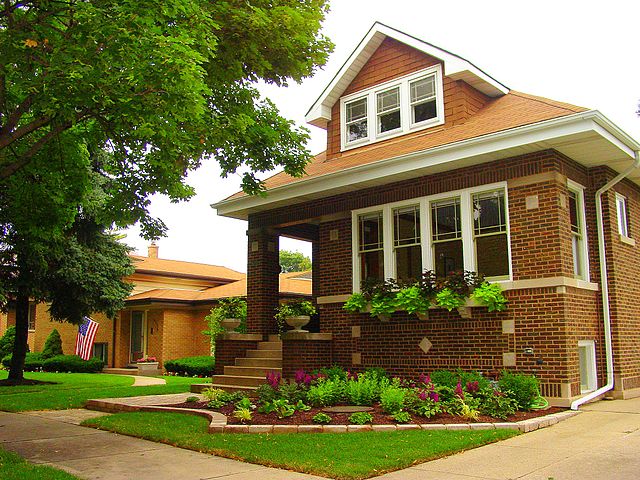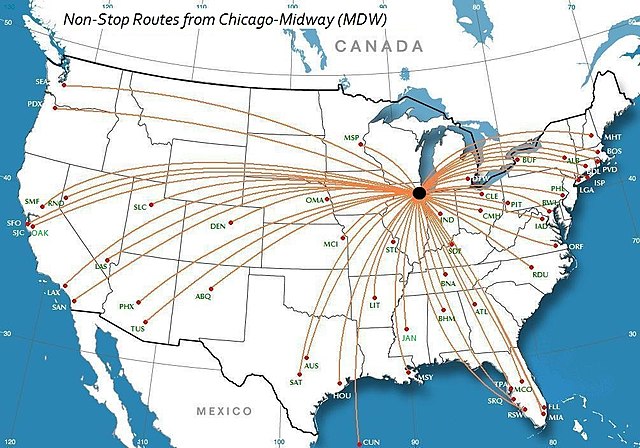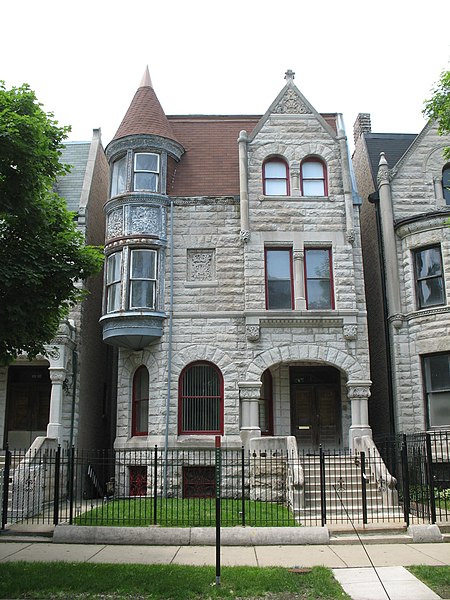Prairie Avenue is a north–south street on the South Side of Chicago, which historically extended from 16th Street in the Near South Side to the city's southern limits and beyond. The street has a rich history from its origins as a major trail for horseback riders and carriages. During the last three decades of the 19th century, a six-block section of the street served as the residence of many of Chicago's elite families and an additional four-block section was also known for grand homes. The upper six-block section includes part of the historic Prairie Avenue District, which was declared a Chicago Landmark and added to the National Register of Historic Places.
The National Historic Landmark John J. Glessner House at 1800 South Prairie Avenue
Old Otis home at 1709 Prairie
George Pullman residence: 1729 S. Prairie Ave. (c. 1900)
Interior of Pullman Residence (1922)
The South Side is one of the three major sections of the city of Chicago, Illinois, United States. Geographically, it is the largest of the three sections of the city, with the other two being the North and West Sides. It radiates and lies south of the city's downtown area, the Chicago Loop.
The Victory Monument, which is listed on the National Register of Historic Places, is located in the Black Metropolis-Bronzeville District near the starting point of the Bud Billiken Parade
A typical Chicago Bungalow, examples of which are found in abundance on the South Side.
Midway Airport serves the South Side with connections to the nation and the world.
Ida Wells lived in the Ida Wells House, a Chicago Landmark in the Bronzeville historic district.








